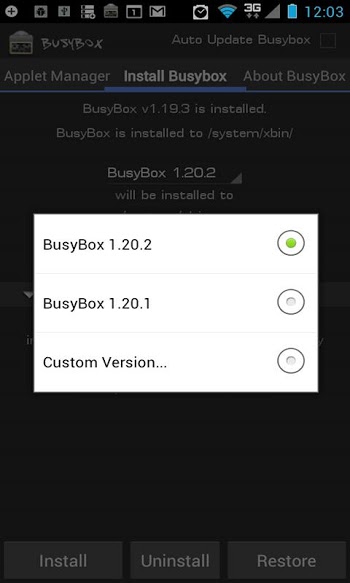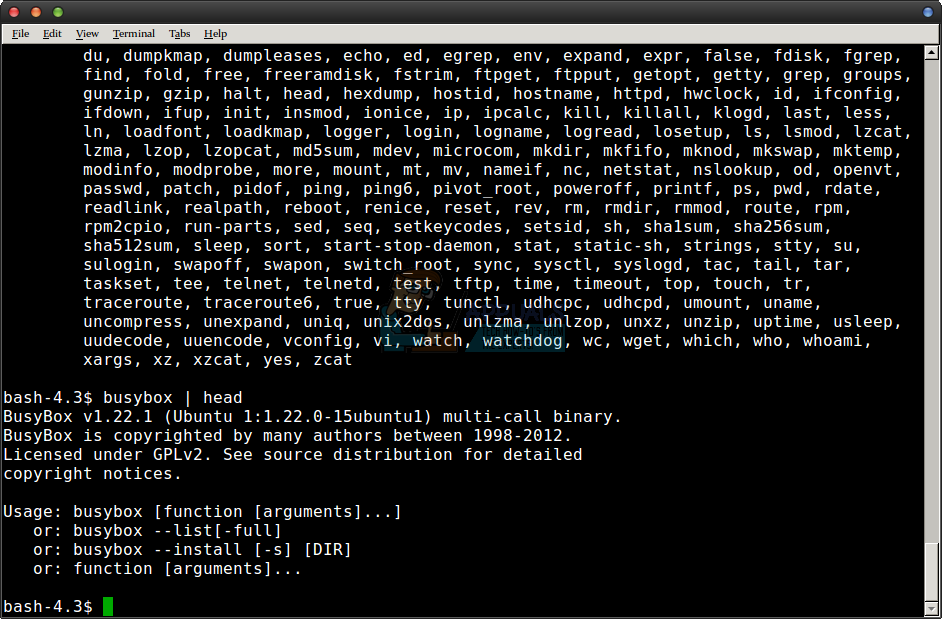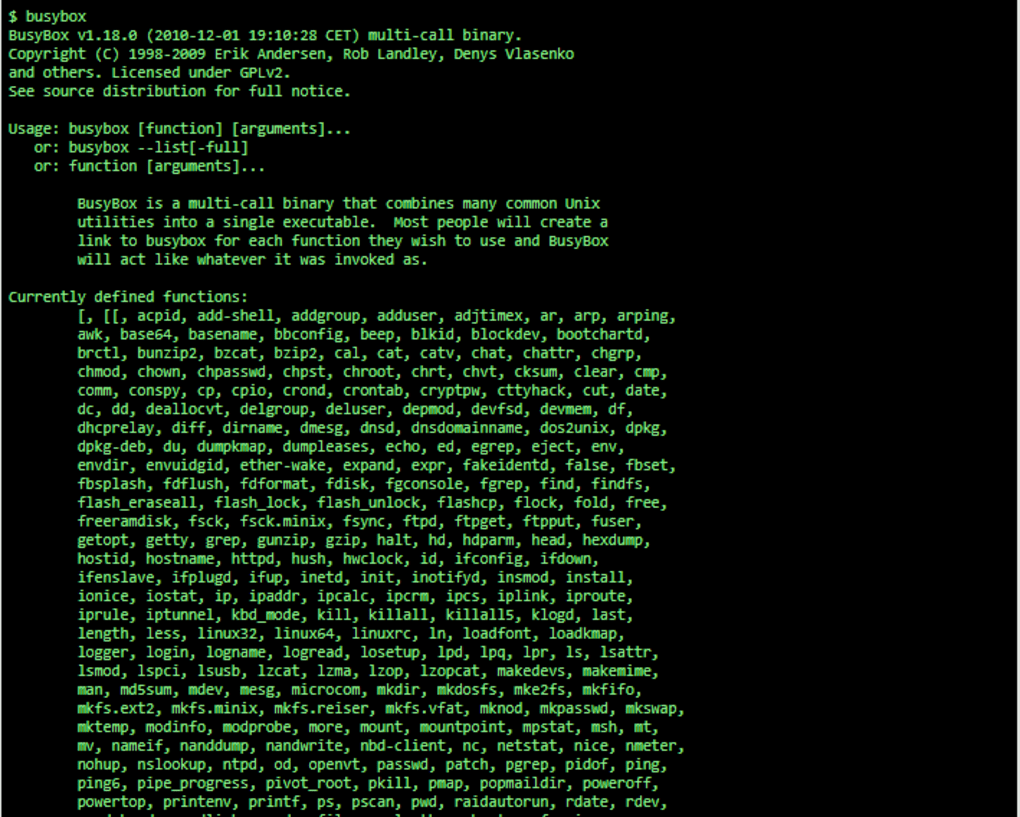
- BUSYBOX VS BUSYBOX FOR ANDROID INSTALL
- BUSYBOX VS BUSYBOX FOR ANDROID ANDROID
- BUSYBOX VS BUSYBOX FOR ANDROID SOFTWARE
- BUSYBOX VS BUSYBOX FOR ANDROID CODE
blkid - Print type, label and UUID of filesystem on a block device or image.bc - Arbitrary-precision arithmetic language.basename - Return non-directory portion of a pathname removing suffix.awk - pattern scanning and processing language.arping - Send ARP REQUEST to a neighbour host.arp - The Address Resolution Protocol (ARP).arch - Print machine (hardware) name, same as uname -m.ar - Create, modify, and extract from archives.adduser, addgroup - Add a user or group to the system.acpi - Show status of power sources and thermal devices.As of November 2021, Version 0.8.6 achieves approximately 80% of the project's implementation goals targeted for 1.0. The official Toybox documentation lists an overview of the available, partially available, and missing commands. Rob Landley, who had started the BusyBox-based lawsuits, responded that this was intentional, explaining that the lawsuits had not benefited the project but that they had led to corporate avoidance, expressing a desire to stop the lawsuits "in whatever way I see fit".
BUSYBOX VS BUSYBOX FOR ANDROID SOFTWARE
In January 2012 the proposal of creating a BSD license alternative to the GPL licensed BusyBox project drew harsh criticism from Matthew Garrett for taking away the only relevant tool for copyright enforcement of the Software Freedom Conservancy group.
BUSYBOX VS BUSYBOX FOR ANDROID ANDROID
In 2018 a host Toybox prebuilt was added to AOSP to help make the Android build itself more hermetic. Īt the end of 2014 Toybox was integrated into the Android 6.0.x "Marshmallow" development branches for use on devices. In March 2013 the project was relicensed to an even more permissive 0BSD license. Rob Landley agreed with this goal and resumed work on Toybox, starting by relicensing from the GPL-2.0-only license to the BSD-2-Clause license. Īt the end of 2011 Sony employee Tim Bird suggested creating a permissively licensed alternative to BusyBox. Toybox was started in early 2006 by Rob Landley after he ended his BusyBox maintainership due to a dispute with Bruce Perens, the original creator of BusyBox. Feature-wise, Toybox has not reached parity with BusyBox. Google's Android, which is an explicit target of Toybox. BusyBox is mostly used in the copyleft FOSS domain, while Toybox is used mostly with permissive licensed projects and by commercial companies, e.g. Toybox is licensed using the permissive 0BSD license, where BusyBox uses the copyleft GNU General Public License, which led to different usage domains. Toybox aims to be mostly POSIX-2008 and LSB 4.1 compatible, and doesn't focus on having every option found in GNU counterparts.

Toybox's major technical design goals are simplicity, smallness, speed and standard compliance. Toybox aims to provide a BSD licensed replacement for the GPL licensed BusyBox.

#!/bin/shĬODESOURCERY=~/CodeSourcery/Sourcery_G++_LiteĬp $FILES/.busyboxConfig $BUSYBOXDIR/.configĪdb push $BUSYBOXDIR/busybox /system/bin/Īdb shell. You also need to change the BUSYBOXDIR to wherever you downloaded the busybox source code.
BUSYBOX VS BUSYBOX FOR ANDROID INSTALL
Script to make busybox and install it on the connected device (the android device has to be connected through adb before using this script).Ĭhange the CODESOURCERY variable to whatever path you installed CodeSourcery to (if you chose to install this toolchain in your Path, you can remove this variable and the export PATH line). Then, push the busbox file to the target board, using adb (you have to connect to the target board first).

BUSYBOX VS BUSYBOX FOR ANDROID CODE
Install code sourcery using the bin file. Sourcery G++ Lite 2011.03-41 for ARM GNU/Linux –


 0 kommentar(er)
0 kommentar(er)
